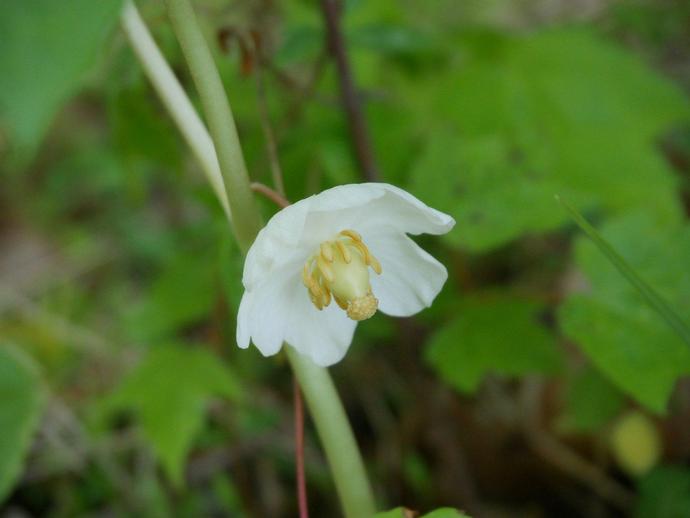April 29, 2020
The mayapple (Podophyllum peltatum), also known as American mandrake and ground lemon, is fairly widespread across the eastern U.S. and southeast Canada. These plants can grow about a foot tall and produce umbrella-like leaves. In the spring, they produce white or yellow flowers (I've also read they can produce red flowers, although I've never seen one myself). By the summer, these flowers turn into a fleshy fruit that can be either green, yellow, or red -- it's like nature's traffic light!
From what I've read, all parts of the plant are toxic, although the fruit can be eaten "in small amounts" if the seeds are removed. Since we all have different definitions of "a small amount" (for example, I consider a pint of ice cream to be a single serving) it's probably not worth risking it.
The rhizome of the mayapple (which is an underground stem resembling a root) produces very small amounts of a toxin known as podophyllotoxin. This substance is highly toxic if eaten, but once refined in a lab, it can be used as a key ingredient in a topical cream to remove warts. Scientists have attempted to replicate podophyllotoxin in the lab, but while they have been successful, the yields have been so low that it's more efficient to get the toxin straight from the source. #BenInNature
About this post: Social distancing can be difficult, but the next few weeks present a great opportunity to become reacquainted with nature. While he is working from home, Administrator of Science Ben Williams is venturing outdoors each day to record a snapshot of the unique sights that can be found in the natural world.
This post brought to you by VMNH Corporate Supporter King's Grant Retirement Community.

 Hours & Admissions
Hours & Admissions Directions
Directions

